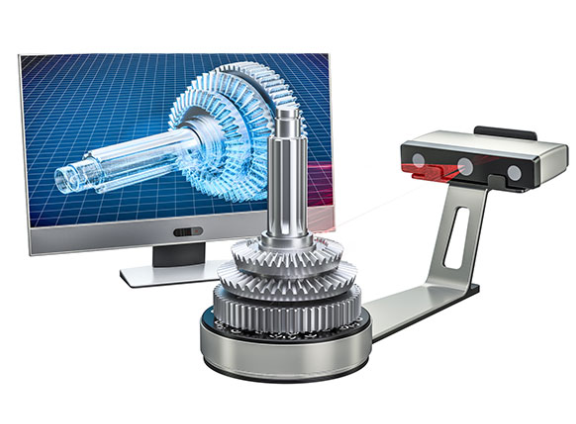As the name suggests, scanner is a tool used to scan objects. By scanning, we can get the image of objects. But like other products and tools, the types of scanners are diverse, and the characteristics and advantages of different types of scanners are also different. Today, let’s learn about the more advanced 3D laser scanner in the scanning field. The following will briefly introduce the characteristics and advantages of different types of 3D laser scanners.

Types Of 3D Scanners
According to different scanning and imaging methods, 3D laser scanner can be divided into one-dimensional scanner, two-dimensional scanner and three-dimensional scanner. According to different working principles, it can be divided into pulse ranging (also known as time difference measurement) and triangulation.
1. Pulse Ranging Method
The laser scanner sends a laser beam from the laser emitter to the object at time T1. Because the surface of the object can reflect the laser, the scanner receiver will receive the reflected laser at time T2. The distance d between the scanner and the object is calculated from the speed of light C, time T1 and T2 = (t2-t1) C / 2.
The measurement accuracy of pulse ranging 3D laser scanner is limited by the accurate measurement time of scanner system. When using this method to measure close objects, a great error will occur because the time is too short. Therefore, this method is more suitable for measuring long-distance objects, such as terrain scanning, but it is not suitable for close range scanning.
2. Triangular Ranging Method
Focus a laser beam on the surface of the measured object at a certain angle, and then image the laser spot on the surface of the object from another angle. The position and height of the laser irradiation point on the surface of the object are different, and the angle of the scattered or reflected light is also different. The position of the spot image is measured by CCD (image sensor) photodetector, You can calculate the angle of the main lightθ. Then, combined with the known baseline length d between the laser light source and the CCD, the distance L ≈ dtan between the scanner and the object is calculated through the triangular geometric relationshipθ.
The handheld laser scanner constructs 3D graphics through the above triangular ranging method: through the handheld device, the object to be measured emits laser spots or linear lasers. Measuring the distance between the surface of the object to be measured and the handheld laser product with two or more detectors usually requires the help of specific reference points – usually sticky and reflective patches – to be used as a three-dimensional scanner for positioning and calibration in space. The data obtained by these scanners will be imported into the computer and converted into 3D models by software.
Characteristics of triangulation:
Simple structure, large measurement distance, anti-interference, small measurement points (tens of microns) and high measurement accuracy. However, it will be affected by the accuracy of the optical element itself, the ambient temperature, the light intensity and diameter of the laser beam, and the surface characteristics of the measured object.
The advantages and characteristics of 3D laser scanner can be summarized as follows:
- Non-contact measurement, active scanning light source.
- High data sampling rate.
- High resolution and precision.
- Digital acquisition, good compatibility.
- It can be used with UAV tilt photography system and GPS system, which greatly expands the application range of 3D laser scanning technology.